This summer marks 84 years since the Battle of Britain was fought in the skies over southern England. This was a fight for Britain’s survival against Nazi Germany which had conquered much of Western Europe in just a few short months.
With the fall of France in June, Britain expected a German invasion, and one was indeed being planned under the code name Operation Sealion. However, for the invasion to be successful the Germans first needed to control the skies over Britain – they needed to destroy the Royal Air Force.
The Battle started on 10th July 1940, with German raids on shipping and coastal targets designed to draw the RAF into the air in defence. Throughout the summer the Battle intensified with raids on airfields, communication centres and industrial targets in August.
The RAF had started the Battle with far fewer planes and experienced pilots than the German air force – the Luftwaffe – and by September the Germans were convinced that the RAF’s Fighter Command was almost finished. Launching huge raids on 15th September, they discovered that Fighter Command was very much still fighting and lost more than double the number of planes than the RAF did that day. On the 17th of September invasion, plans were suspended indefinitely, although the Battle continued until the end of October.
Just under 3,000 pilots flew with Fighter Command during the Battle of Britain – a tiny number to defend the country – and their huge achievement was recognised by wartime Prime Minister Winston Churchill’s description of them as “the Few”. They were not just British, but came from all over the world, including Poland, Czechoslovakia, New Zealand, Australia, Canada and South Africa.
But these men didn’t fight the Battle alone. “The Few” were supported by huge numbers of service personnel and civilians. From the crews of RAF Bomber and Coastal Command to the ground crews who maintained the planes, the factory workers who built them, the Observer Corps and radar operators who spotted German planes, and the plotters who tracked them in operations rooms – victory in the Battle of Britain was secured by “the Many” as well as “the Few”. They will all be remembered this summer.
Next time you’re able to visit London, consider adding these five amazing Battle of Britain sites to your itinerary.
The Headquarters: Bentley Priory Museum
Key to the RAF’s survival during the Battle of Britain was the Dowding System developed by Air Chief Marshall Sir Hugh Dowding. This was the world’s first integrated system of air defence. It brought together information from radar stations and the Observer Corps on incoming German planes and passed it to Operations Rooms, which would “scramble” the RAF fighter aircraft – sending them to intercept the incoming German raids. With far fewer planes and trained pilots than the German air force, the RAF used this system to target incoming raids rather than having to patrol the skies, saving precious resources.
Bentley Priory, where the system was developed, was originally built as a private mansion and used as a hotel and a school before being bought by the RAF. It served as the headquarters of Fighter Command from its creation in 1936. Today you can see Dowding’s office and the ballroom where a model operations room was developed before the war. The RAF left the site in 2008 and a museum was then created in the building with great Battle of Britain exhibitions, although the original operations and filter rooms had been moved underground during the war and are not accessible.
Bentley Priory is an amazing piece of Battle of Britain history tucked away in the outer suburbs of London in the middle of a private housing estate. It has parking and the number 142 bus from Stanmore Underground Station stops right outside the estate.
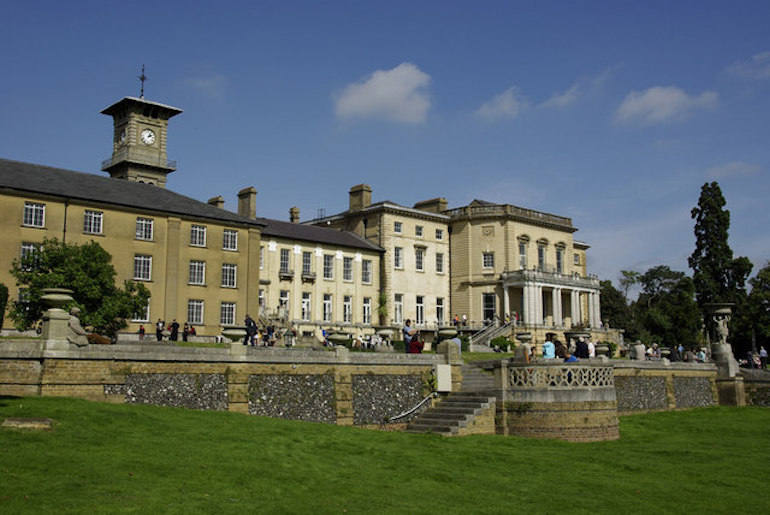 Bentley Priory Museum in Stanmore. Photo Credit: © David Marsden via Wikimedia Commons.
Bentley Priory Museum in Stanmore. Photo Credit: © David Marsden via Wikimedia Commons.
The Group Operations Room: Battle of Britain Bunker, Uxbridge
Under the Dowding System, the air defence of Britain during the Battle was divided into four geographical areas called groups. Most pressure fell on 11 Group, responsible for the defence of London and South East England. The No. 11 Group Operations Room, completed only 10 days before the war broke out, was the scene of key decisions during the Battle and was visited by King George VI and Winston Churchill. Amazingly it is still there for you to visit!
Accessed by 76 steps, the Battle of Britain Bunker still has the original table with a map of southern England where the Women’s Auxiliary Air Force would update the position of incoming German aircraft. The replica tote board behind was also continuously updated with the readiness of each squadron in 11 Group. The Controller would be in a glassed cabin above so he could see all the information and decide which squadrons to scramble. These decisions had to be taken in less than two minutes – a huge responsibility under immense time pressure. Just being in the room is a spine-tingling experience.
Above ground is a brilliant modern visitor centre with more information about the Dowding system and the lives of those who worked at the bunker. The Battle of Britain Bunker is also hidden away in the middle of an area of suburban housing. It has parking, and the closest Underground Station is Uxbridge.
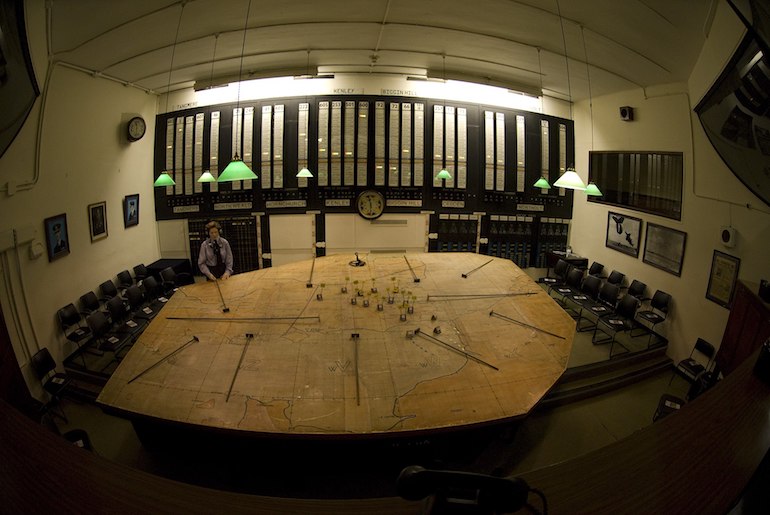
The Group Operations Room at the Battle of Britain Bunker in Uxbridge. Photo Credit: Danielstirland via Wikimedia Commons.
The Fighter Station: Biggin Hill Memorial Museum
During the Battle of Britain, 11 Group aircraft took off from seven sector airfields and from several satellite airfields, but the most famous of all was Biggin Hill – high above the southern boundary of London. Winston Churchill described Biggin Hill as his “strongest link” in the chain of airfields protecting London. During the Battle the airfield claimed 340 victories at a cost of 54 pilots. It was on the direct route flown by German planes aiming for London and was repeatedly attacked, including on the 30th August when one raid claimed the lives of 39 personnel on the site. Despite this the airfield continued operating throughout the Battle.
The Chapel of Remembrance at Biggin Hill dates from 1951 (on the site of an earlier chapel destroyed by fire) and in 2019 a new museum opened there. It tells the stories not just of the pilots who flew from Biggin Hill, but also of the ground crew and the local civilian community that supported them. The exhibition is filled with donated letters, medals and uniforms and provides a very personal connection to the Battle of Britain.
Biggin Hill is on the very southern edge of London. The Biggin Hill Memorial Museum site has parking and buses 320 and 246 from Bromley South Station stop outside the museum.
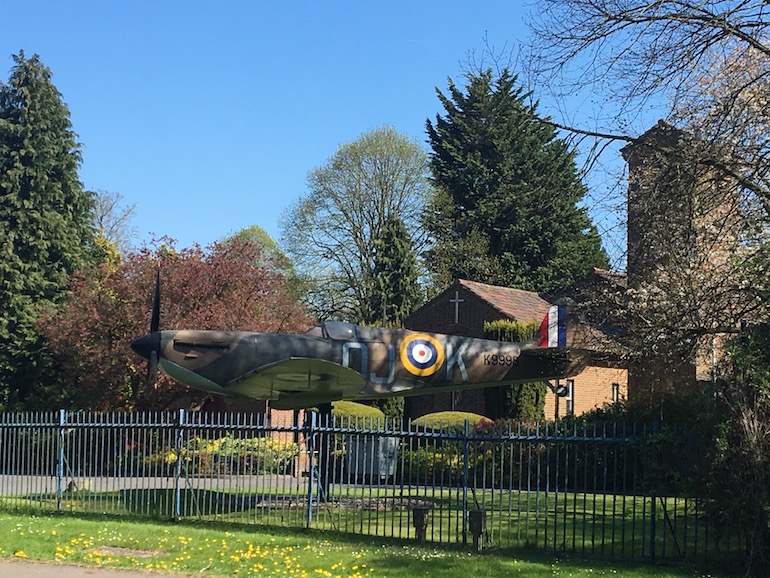 Spitfire in front of St George’s Royal Air Force Chapel of Remembrance Biggin Hill. Photo Credit: © Ursula Petula Barzey.
Spitfire in front of St George’s Royal Air Force Chapel of Remembrance Biggin Hill. Photo Credit: © Ursula Petula Barzey.
The Plane: Spitfire at the Imperial War Museum
Although not the most frequent plane flown by Fighter Command, it’s the one most associated with the Battle of Britain: The Supermarine Spitfire. Designed as a short-range, high-performance interceptor aircraft by R. J. Mitchell, chief designer at Supermarine Aviation Works, the first Spitfires were only delivered to the RAF a year before the outbreak of the Second World War. Its high performance meant it could take on the German fighter aircraft accompanying their bomber planes over Britain.
The best place to see a genuine Battle of Britain Spitfire in London is at the Imperial War Museum. Suspended above the main atrium and best viewed up close from the World War Two galleries, the plane on display flew 57 combat missions during the Battle. Flown by 13 pilots of 609 Squadron, the plane was damaged on three occasions but was patched up and continued to fly. It is displayed with the colours of the Operational Training Unit, which used the plane later in the war.
The Imperial War Museum has an amazing collection relating to wars Britain has fought since 1914, including Turning Points – its Second World War Gallery. It is free to visit, located in central London, and the closet Underground Station is Lambeth North.
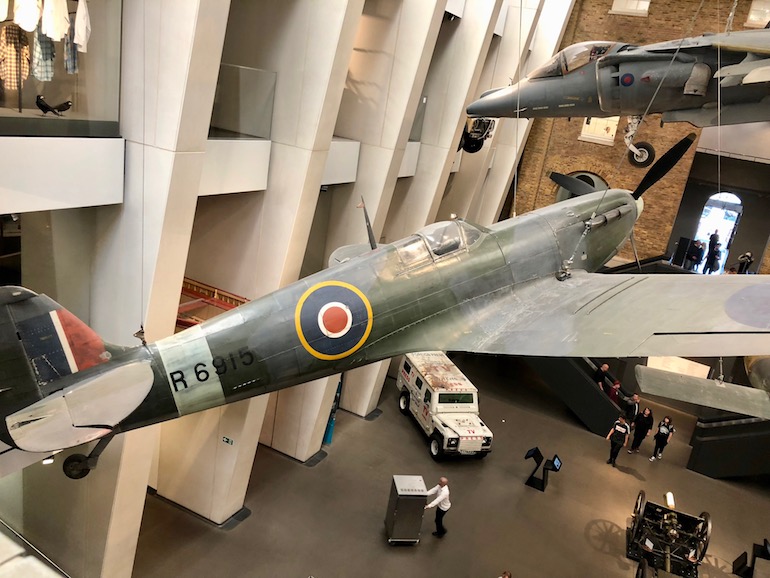 Spitfire in the Atrium at the Imperial War Museum in London. Photo Credit: © Ursula Petula Barzey.
Spitfire in the Atrium at the Imperial War Museum in London. Photo Credit: © Ursula Petula Barzey.
The People: The Battle of Britain Memorial, Embankment
The Battle of Britain Memorial is the perfect place to end our tour. Sculpted by Paul Day and unveiled by Prince Charles in 2005, it remembers the bravery and sacrifice of “the Few” and the amazing hard work and dedication of the many who supported them. The memorial can be found on the Embankment in central London. The closest Underground Station is Westminster.
The centrepiece of the monument is “Scramble”, showing airmen running toward their planes after being ordered to scramble to intercept enemy aircraft. Around the outside of the monument is a list of all the airmen who flew in combat missions during the Battle, listed by country. It is worth taking the time to look at all the detail on the frieze showing all the support roles and ordinary citizens who lived through this extraordinary period of history.
Eighty-four years on we are indebted to all of those who contributed to Britain’s survival in the summer of 1940. By keeping Britain in the war, it made victory in 1945 possible.
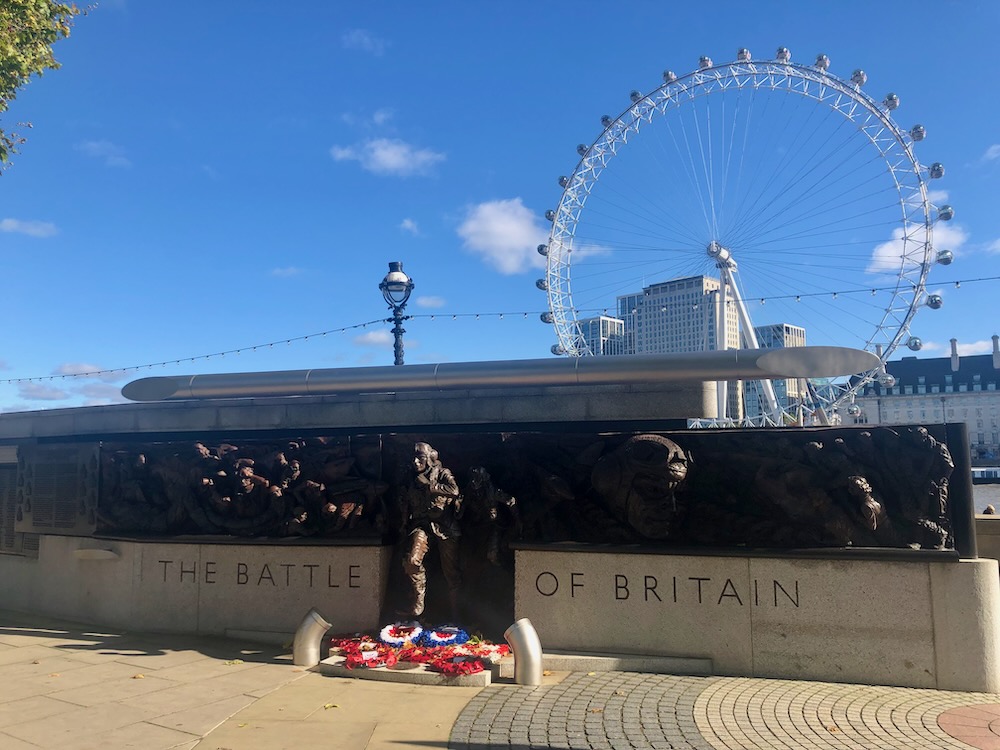 The Battle of Britain Memorial on the Victoria Embankment in London. Photo Credit: © Ursula Petula Barzey.
The Battle of Britain Memorial on the Victoria Embankment in London. Photo Credit: © Ursula Petula Barzey.



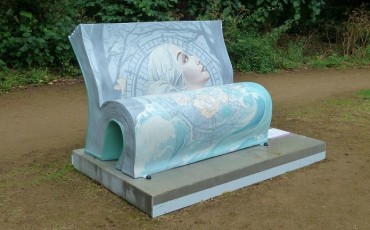
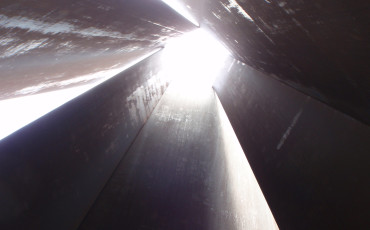


Leave a Reply